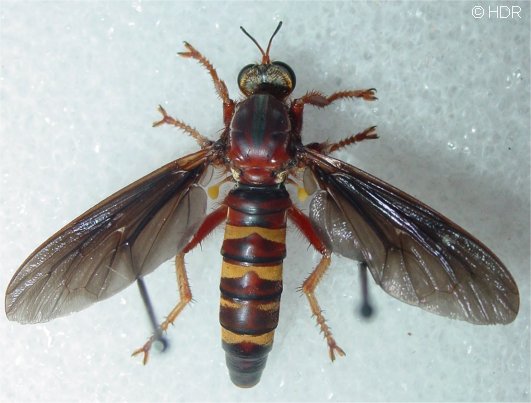|
|
|
Prolepsis tristis. A genus with a single member in North America. And a highly impressive one. When I first saw a pair of these fly up I thought they were wasps linked in sexual union. Though, in fact, I had never seen wasp sex at that time. I was excited either way (yes, I admit that I am unusual). They were mating Prolepsis. These two in the picture are not mating. In fact, they are both males. The male on the left, which is apparently an orange-tipped color form, is eating the male on the right, the black-tipped color form. The female is even more wasp-like. And without any knowledge I would have passed these off on a past summer walk as wasps. |
|
|
|
Side view, same pair of males, showing the fine color patterning on the orange-tipped form. |





